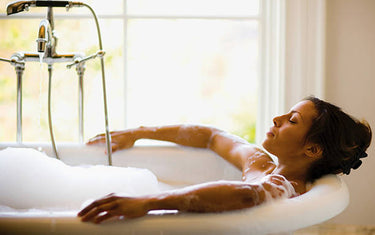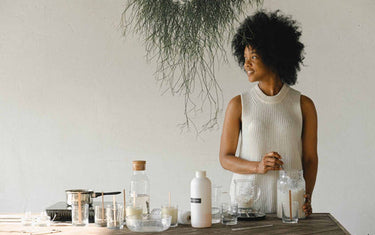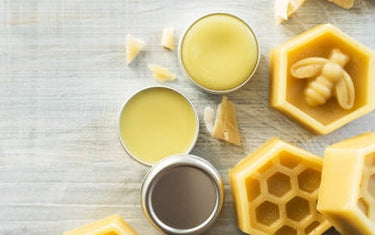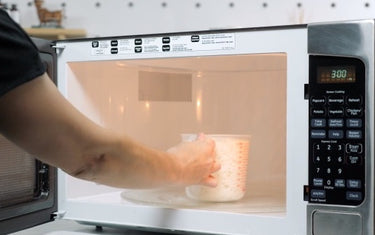7 min read / 29 September 2023 / yasmin sharp
What is a CPSR?
Discover the key aspects of a CPSR (Cosmetic Product Safety Report) in our blog, shedding light on its crucial role in cosmetic safety.
Share this post

Making a cosmetic product that you, your friends and family love is one thing, but if you want to start selling it to the public, there are quite a few regulatory and legal obligations you will have to meet.
This is where CPSR testing comes in, which takes an in-depth look at the composition of the product to ensure it is safe for people to buy and use. Whilst the process may seem daunting and confusing, it is relatively straightforward once you get started. Our guide aims to help you understand the regulations in more detail, so you can bring your product to market with a little more clarity.
What is a CPSR?A Cosmetic Product Safety Report (CPSR) is documentation produced by a qualified cosmetic safety assessor to describe how safe the product is. It is a mandatory legal requirement for all cosmetic recipes and products that are made available in the UK and European Union markets to ensure they meet current health and safety standards. The designated Responsible Person must oversee the production of a CPSR. |
What is a Responsible Person?
A Responsible Person is someone who has been designated as the legal representative of the brand in the UK and EU. Their role is to ensure that any products being sold to the public comply with current regulations before they are launched and during the entire time they are available to purchase.

How do I get a CPSR in the UK?
To get CPSR certification in the UK you will first need to find a qualified cosmetic safety assessor. They must hold a relevant degree from a European university with expertise in toxicology, dermatology, and microbiology.
If your products are being produced by a factory or contract manufacturer that has its own R&D department, they may be able to provide access to a safety assessor that they either employ or have an existing relationship with.
There are also a growing number of third-party providers that offer this service that can be found by searching online. You can use the search term “CPSR testing in the UK” as a start point.
Before a cosmetic product can be made available in the UK, all relevant information must first be supplied to the Office for Product Safety and Standards. The government body will make the final decision about the availability of the product based on the information provided by the CPSR.
Do I need a cosmetic product safety report?
If you intend to sell your cosmetics to the public, then you will require a cosmetics safety assessment. Any cosmetic or toiletry product that comes into contact with the skin requires a CPSR.
This ensures that any soaps, lotions, creams, bath bombs and anything else being sold that is designed to be applied to, or interact with, the skin is safe to use.
The CPSR is a crucial part of safety testing for cosmetics, which helps guarantee consumer protection and regulatory compliance in the cosmetics industry.
How much does CPSR certification cost?
Unfortunately, there is no fixed cost for getting a CPSR certification, as the price is determined by the provider offering the service.
Prices can vary depending on how quickly the test is conducted, who is providing the assessment and whether you need a report for an individual product or for several items, as some third-party companies offer batch discounts.
If any changes need to be made to the original formulation, you may also incur additional charges from the assessor, so you should ensure that any restricted ingredients are within the permitted restrictions.

What are CPSR requirements in the UK and EU?
There are a lot of similarities between CPSR requirements in the UK and EU cosmetics regulations.
Part A of the regulations primarily covers:
- Product information: This describes what the cosmetic product is, its intended use, the name and address of the Responsible Person and the product category.
- Formulation: A full list of product ingredients, including their concentration levels.
- Manufacturing process: The report will need to detail how the product is manufactured, including the type of batch control, quality control and stability testing it has passed through.
- Safety assessment: As part of the safety assessment, it will have to account for any risks that may be associated with the ingredients and manufacturing process. It should also look at potential side effects that could be experienced as a result of using the product.
- Post-marketing surveillance: This part of the CPSR report should show what is being done to monitor the safety of the product after it has been made available to the public.
Part B of the CPSR covers the following criteria:
- Threshold of Toxicological Concern (TTC): This assesses the risk potential of any substances that have limited toxicity data. They are then assessed by comparing them to other substances that are likely to have similar toxicity profiles.
- Exposure Assessment: This part of the safety assessment details the duration, frequency and area of application of the cosmetic product and whether the user could also potentially ingest or inhale it, and how this could affect them.
- Hazard identification: The toxicological profile of the product and its ingredients are examined to test for acute and chronic toxicity, phototoxicity, skin sensitisation and eye and skin irritation.
- Risk characterisation: The potential risk of the product is evaluated based on the exposure assessment and hazard identification. The difference between the exposure level and the lowest-observed-adverse-effect level (LOAEL) or the no-observed-adverse-effect level (NOAEL) is used to determine the margin of safety.
- Safety products: Uncertainty factors such as variability in exposure, individual susceptibility and extrapolation from data are used to account for any uncertainties that may exist in the assessment.
Common mistakes to avoid when preparing a CPSR
When preparing your CPSR, try to avoid these common mistakes:
- Using poor quality materials: Always ensure you purchase ingredients and materials from reputable providers. This may increase production costs, but it ensures the health and safety risks are not increased.
- Material suppliers not providing enough information: This stems from the first point, as a reputable supplier will have no issue in supplying the required information about the materials and ingredients you are using. Without it, the safety assessor cannot approve the product.
- Incorrect usage description: Products that are presented using confusing or incorrect language, will make it unclear how or where they are supposed to be used.
- Requesting a CPSR after manufacturing: It is a big financial risk to manufacture a full batch of the product before requesting a CPSR, because if it is deemed not safe, changes will have to be made before it can be sold.
- Stability test without a compatibility test: Both tests must be completed before the product can be launched, otherwise you could experience a long delay.

Do I need to carry out any other tests on my products?
Stability and compatibility tests are required to ensure the customer can use the product as intended. It also reinforces safety standards, as some ingredients can separate into potentially hazardous components, or sometimes interact with packaging or manufacturing processes in unexpected ways.
Products that contain only oils should remain stable as a blend of oils will not separate (although a test is still required). However, products that contain a mixture of water and oil must contain enough emulsifiers to keep the product stable for its entire lifespan.
These tests must also be carried out every time there is a change to the formula, packaging or manufacturing process.
Products that contain water are also required to secure a Preservative Efficacy Test (PET). This is an antimicrobial effectiveness test that is performed to ensure microorganisms are limited to prevent spoilage and potential infections. Ideally, this test should be carried out as soon as possible after a new product has been manufactured.
Basic checklist for cosmetic product compliance in the UK
Before your cosmetic product can be made available on the market, you will need to ensure:
- No restricted ingredients are being used, and those that are present remain within the permitted restrictions.
- The product passes a Preservative Efficacy Test if it contains water (aloe vera juice and witch hazel contain water, for example).
- That your product is stable and that you have calculated the ‘shelf life’ of your product.
- Suitable ingredients to stop oxidisation are being used if your product does not contain water (adding 0.2% Vitamin E to your product can stop oxidisation).
- A Product Information File (PIF) has been created that documents all the ingredients and batches used to make the product, along with relevant safety data sheets.
- The product label contains all legally required information, including an INCI (ingredients listing).
Cosmetic formulations that use essential oils should stick to a dilution ratio under 2%, as this should ensure you meet the legal requirement. However, there are additional restrictions in place for products that include ylang ylang, jasmine, rose and carrot seed.

Securing a CPSR is essential if you intend to sell cosmetic products to the public. Not only does it ensure safety risks are minimised, but it also means you are fully compliant and not having to face up to a complicated legal process should something go wrong.
Whilst it may seem complicated, it is largely a documental exercise, so as long as you have all your paperwork in order, it should make things easier and faster to complete.
Take your time to find a reputable and reliable CPSR provider and use our basic checklist above as a guide on what else you may need to do before bringing your product to market.
Once you’re ready to start selling your cosmetic products, consider signing up for our wholesale account for savings on our range of products.









